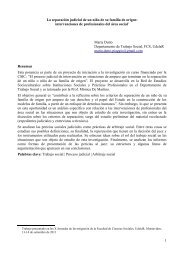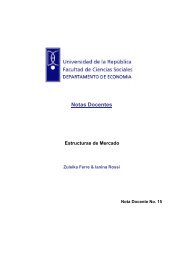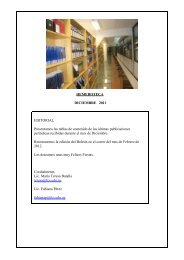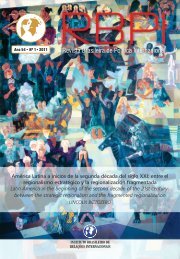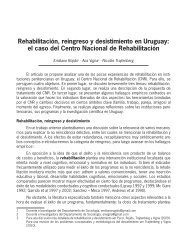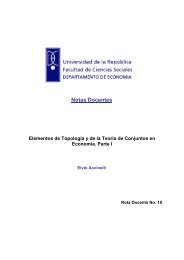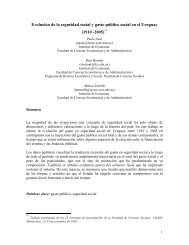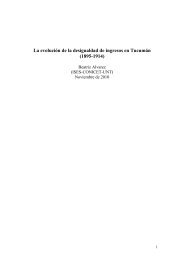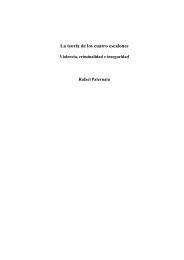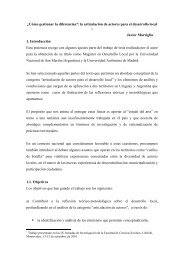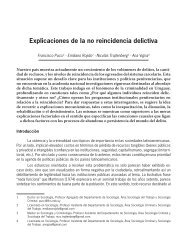Paulo Ravecca - Facultad de Ciencias Sociales
Paulo Ravecca - Facultad de Ciencias Sociales
Paulo Ravecca - Facultad de Ciencias Sociales
Create successful ePaper yourself
Turn your PDF publications into a flip-book with our unique Google optimized e-Paper software.
how military men and leftist militants shared some discursive logic in terms of gen<strong>de</strong>r and the<br />
body, though the difference between them was enormous.<br />
For the leftist organizations, the body was an instrument of political activity –eventually, it<br />
should be sacrificed for “the cause”. The “discourse of the warrior” and of class struggle did not<br />
recognize gen<strong>de</strong>r in any form. Regarding “homosexuality”, the situation was worse: Marxists<br />
and fascists used to employ similar language. However, again, complexity must be<br />
acknowledged; if Marxism needs a reorientation in practice and theory to abandon its hypermasculinist<br />
discourse, a simple comparison of militant and military bodies is enough to discover<br />
the difference. The leftist militants had beards, long hair, undisciplined bodies (thin, unworked);<br />
they represented a kind of “mixed body” in which the “feminization” of 1968 was expressed.<br />
The “body fascism” of the dictatorship, on the other hand, was fixated on gen<strong>de</strong>red roles; the<br />
dictatorship hysterically “cleaned”, “fixed” and “gen<strong>de</strong>red” bodies.<br />
Spanish colonization, the neocolonial state and empire-building share a tough approach to<br />
gen<strong>de</strong>r regulation in terms of violent heterosexualization (Alexan<strong>de</strong>r, 2007). In the case of<br />
Uruguay, the dictatorship not only tortured and killed leftist militants, but imposed a clearly<br />
gen<strong>de</strong>red regime in the schools (textbooks, uniforms, hair, and attitu<strong>de</strong>) and <strong>de</strong>veloped a<br />
repressive discourse explicitly opposed to the relatively open environment of the sixties. If the<br />
building of the Republic itself implied the extermination of native people and a public sphere<br />
conducted basically by men, the dictatorship tried to impose a discourse in which communism<br />
was alien to “our society” and the strong men, the military, saved us from that foreign form of<br />
<strong>de</strong>pravation. Schools were a very sensitive space in this regard. Extremely conservative<br />
“teachers” of “Moral and Civic Education” lectured about the appropriate behavior of women,<br />
their <strong>de</strong>sirable subordination towards men and the necessary sexual division of duties and rights.<br />
Male stu<strong>de</strong>nts had to wear their hair very short, while jeans were prohibited and gen<strong>de</strong>red<br />
uniforms imposed. As documented in the shocking report on human rights violations during the<br />
dictatorship, entitled Nunca Más (“Never Again”) (SERPAJ, 1989), sexuality also played an<br />
important role in torture. Many political prisoners were raped –both women and men. The notion<br />
of “breaking” the masculinity of the male militant was always implied. However, it seems that<br />
women have been more able to talk about the uses of sexuality in prison. I can only won<strong>de</strong>r<br />
about the <strong>de</strong>ep implications of all of this for thinking through the layers of Uruguayan<br />
(homo)sexuality.<br />
12



